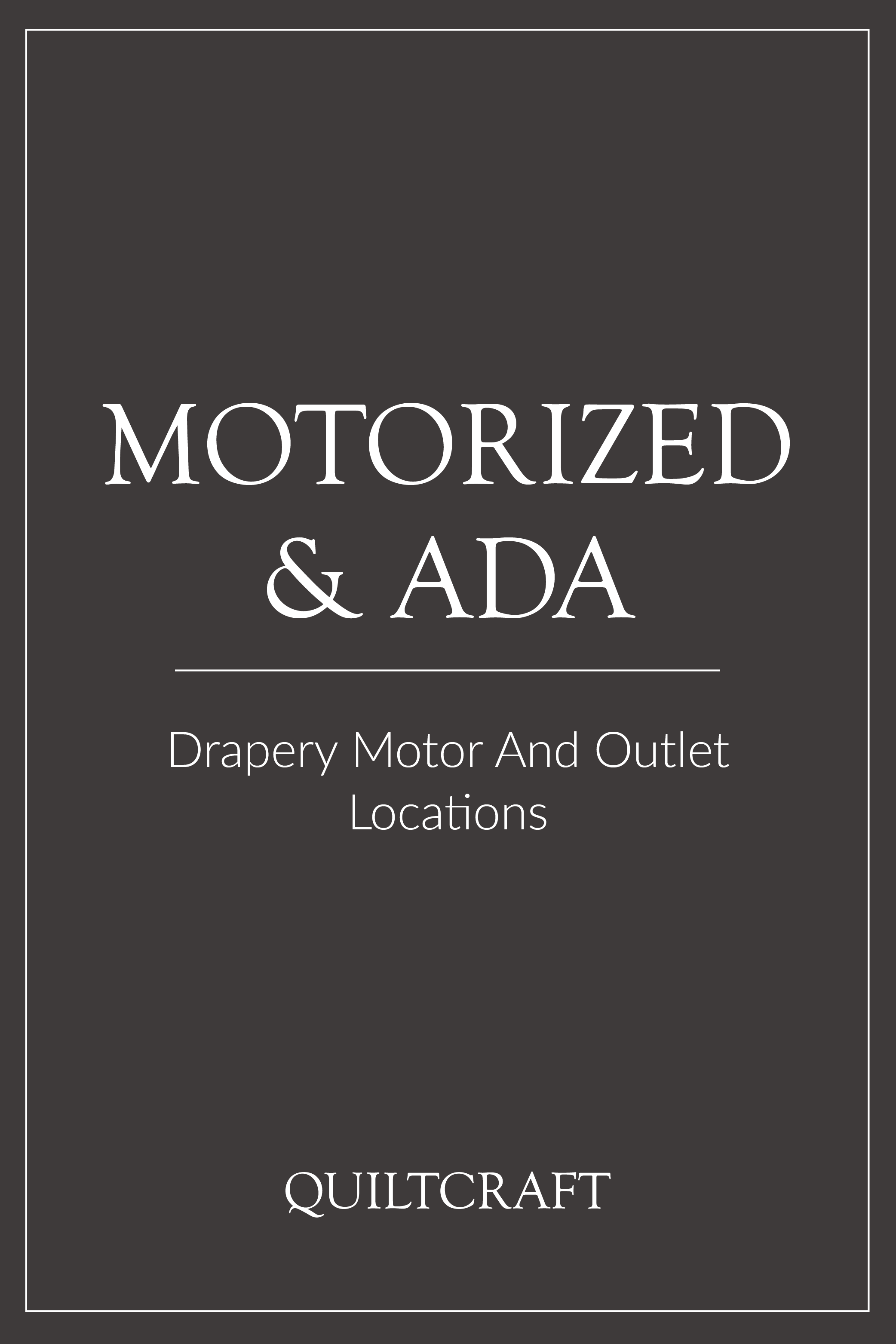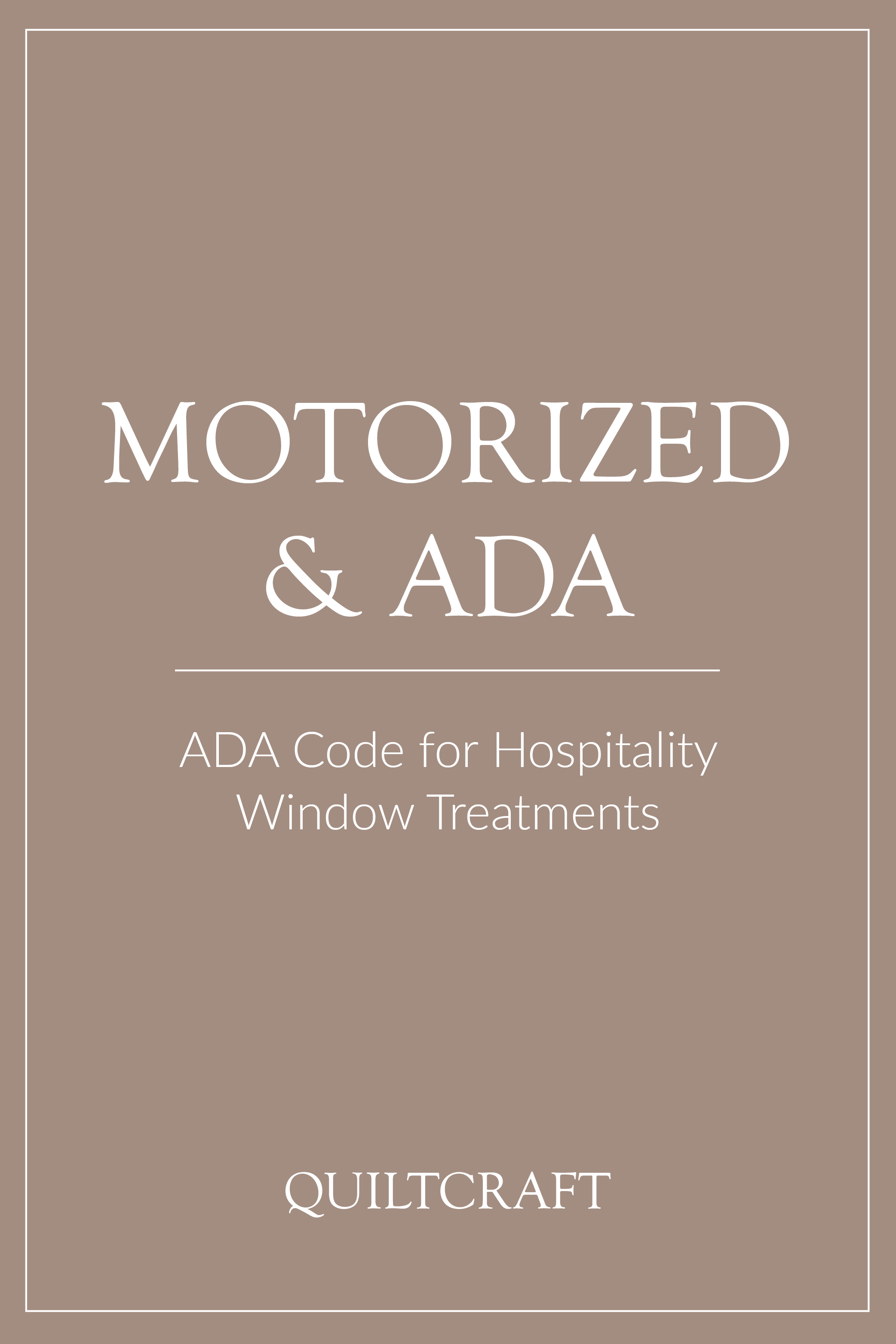Outlet Placement For Motorized Window Treatments
Where should an outlet be placed for Plug-n-Play Motorized Treatments?
Motorized Treatments of any kind (Drapery, Roller Shades or Roman Shades), can be fantastic choices for guestrooms. They act as an easy solution for ADA rooms and really add a sense of class and sophistication to normal guestrooms as well.
The question of outlet placement is usually asked by Owners and General Contractors because it is in their scope of work to install new outlets in guestrooms. The simple answer is that it depends and should be talked through in detail with the drapery project manager in charge. The answer will vary depending on the exact treatments being installed as well as the site conditions. There is not a simple one size fits all solution.
That being said, there is an easy solution and there is an ideal solution. First, we will start with the easy solution. The easy solution is the one with the least amount of work and may in certain situations be possible without any work from the General Contractor at all. If there is an available outlet on the window wall and within a reasonable distance from the drapery motor location then the cord may be specified to reach this plug. Usually this option occurs when the plug is located directly below and to the right or left of the window edge or similarly close on the adjoining wall (See Figure A & Figure B). If the plug is within a reachable distance (less than 10 ft.) from the motor, and the cord would not hang in an undesirable place then this would be an incredibly simple solution. Usually, if there are stationary side panels and the cord can be hidden behind them, this option would work as the cord will not be seen by guests.
Figure A shows a Motorized Drapery motor located on the left side of the track with a corresponding outlet. The option of an outlet on the adjoining wall could also work.
Figure B shows a Motorized Drapery motor on the right side of the hardware with a corresponding outlet location.
The Ideal solution is to have the span between outlet and motor to be the least distance possible. This solution is especially ideal when motorized drapery is installed inside a pocket or top treatment such as a cornice or valance (see Figure C & Figure D). In this situation an outlet can be installed at the exact height of the drapery hardware or on the side of a pocket so that the cord can run directly from motor to outlet without the risk of wiring being seen by guests.
Figure C shows an outlet in the wall underneath a 'top treatment' such as a valance or cornice to work with a motorized drapery motor.
Figure D shows an outlet installed inside an architectural pocket on the corresponding side as the motorized drapery motor.
Please see the picture below as a real-life example of a junction box being installed on the side of a drapery pocket. While this example is particularly for a hardwired treatment the principal of placement is the same.
Ballroom Window Treatment Installation with Outlet Placement in Architectural Pocket
Again the placement of new outlets or the ability to use existing outlets to install Plug-n-Play Motorized treatments is a topic that should be discussed with the drapery manufacturer, the general contractor and the purchasing agent/designer. While motorized treatments can solve many issues and take the design of a room “up a notch”, they come with a few extra considerations, such as the above. Managing the placement of outlets and cords is important to the overall integrity of a rooms design.
It is important to note that although the above images all show motorized drapery hardware these same concepts apply to motorized roller shades and roman shades.
We hope this comes in handy the next time you are thinking of specifying Plug-n-Play motorized treatments. Download our motorized treatment resource card for further more basic information and an understanding of other motorized options.
Discover Related Resources













